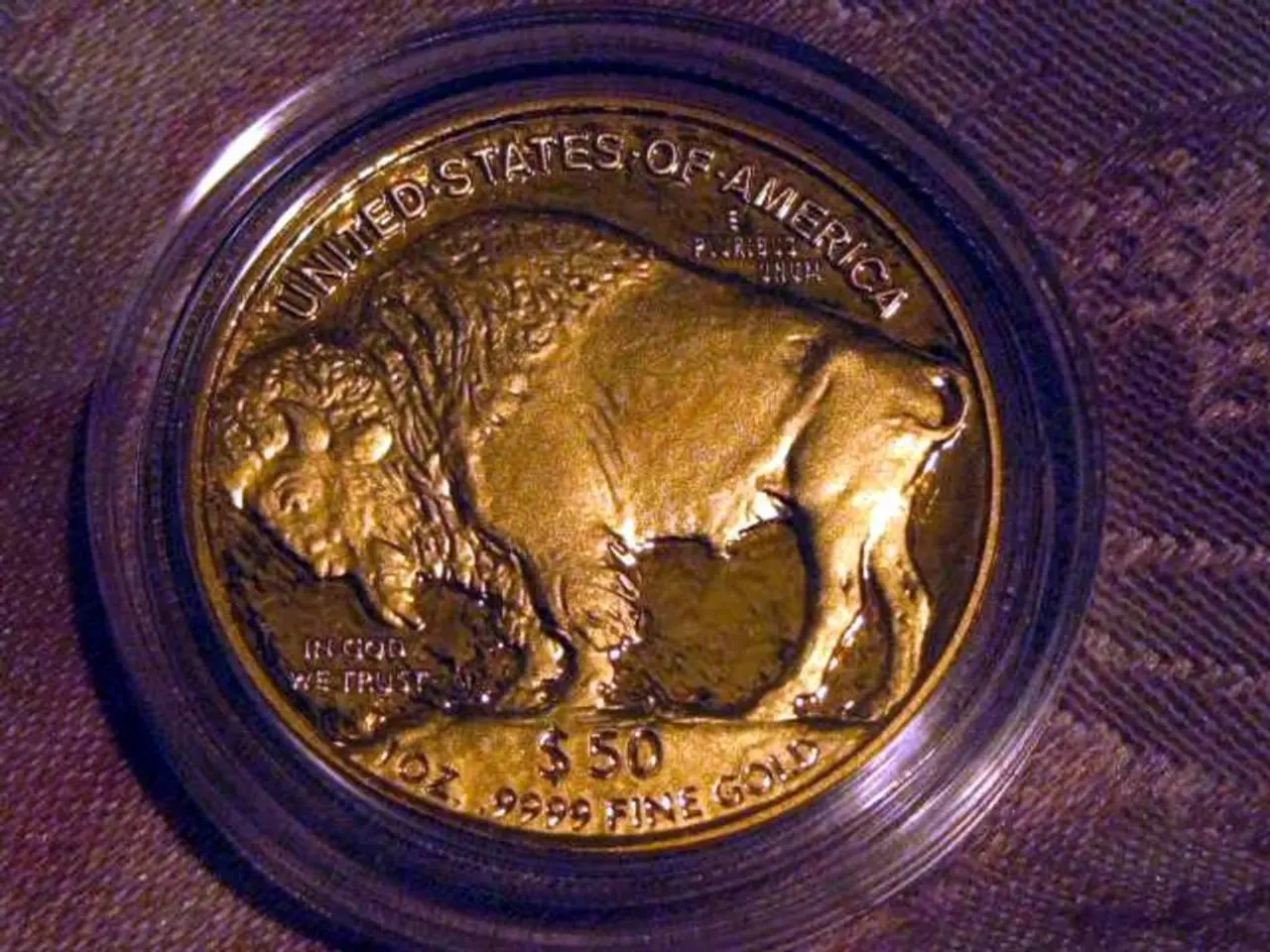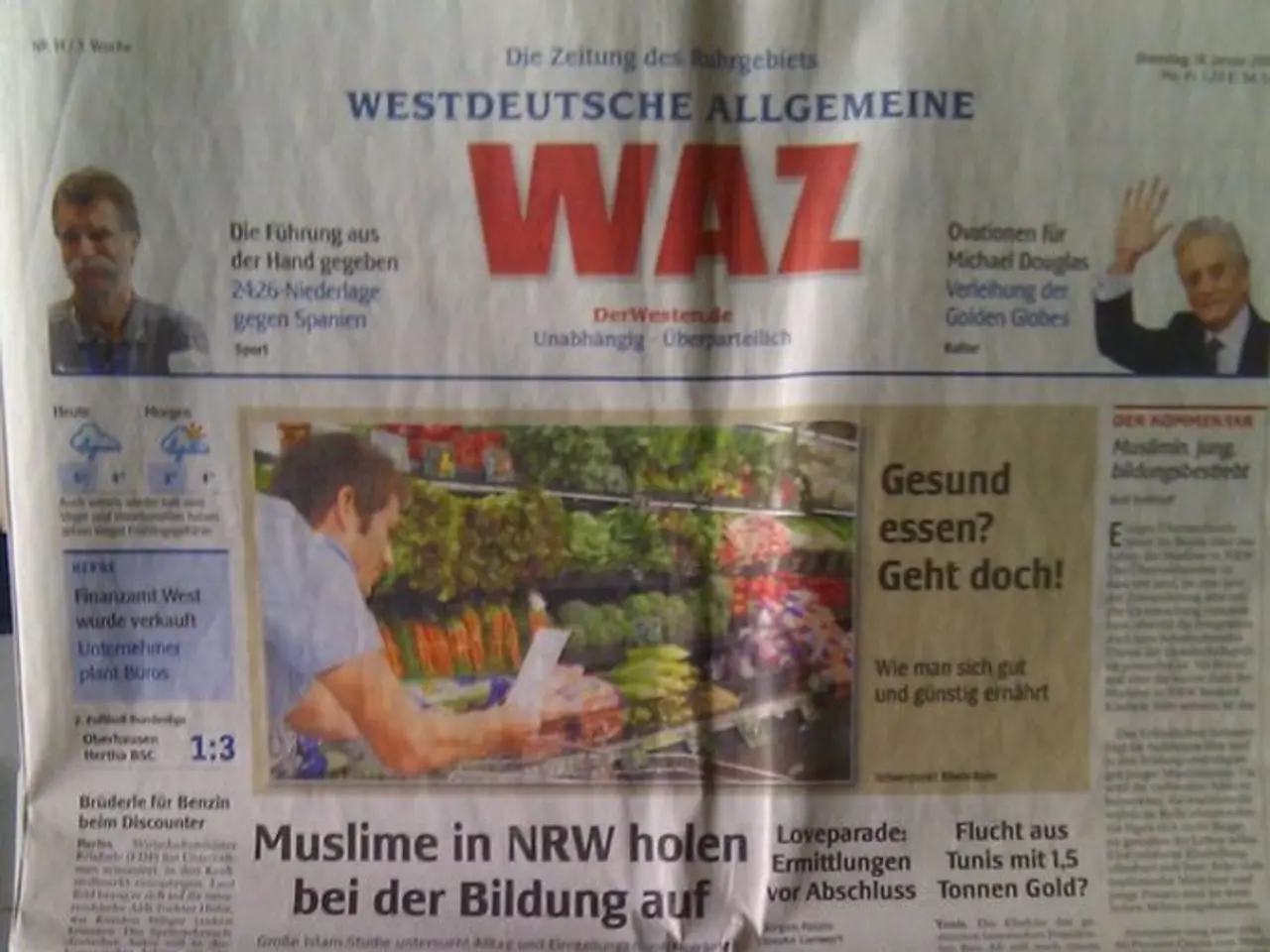Record-breaking Gold Reserves Established
In the heart of Moscow, the Central Bank of Russia reported an all-time high in gold and foreign exchange (FX) reserves on July 1st, reaching a staggering $688.731 billion. This significant milestone comes amidst the ongoing economic impact of Western sanctions following the special military operation in Ukraine, which began earlier this year.
The evolution of Russia's gold and FX reserves has been marked by strategic shifts and adaptations in the face of increasing Western economic pressure. Prior to the conflict, Russia had already established itself as a major player in the global gold market, with the world's most significant sovereign gold purchases and the fifth-largest official gold reserves globally.
Since the invasion, the Central Bank has continued to expand its gold holdings, including additions to a secretive State Fund for Precious Metals and Stones (Gosfund), which can be used flexibly by the government. The Russian government also anticipated increased Western sanctions by reallocating the National Welfare Fund holdings into 60% Chinese yuan and 40% gold before the military operation began. During the war, these gold and yuan reserves have been used to support Russia's budget, compensating for restricted access to traditional foreign currency reserves.
Despite the economic pressure, including Western sanctions, Russia has not reduced its dependence on gold; rather, it has become more central to Russia’s revenue generation and monetary strategy. However, gold is not a substitute for revenues from oil exports, which remain Russia's primary source of natural resource income.
About half of Russia's foreign reserves have been frozen by Western countries—primarily the United States and European nations—following the invasion of Ukraine. This freeze has prompted Russia to increase its gold holdings and to pursue de-dollarization, reducing reliance on the US dollar in international trade and reserves. This shift is part of a broader global trend of rising gold's share in central bank reserves, which in some regions has reached over 20% of total reserves, while the dollar's share has fallen below 50% globally since late 2023.
Anastasia Smirnova, a journalist for RIA "Novy Day", reports that as of the publication date, currency accounts for $440.012 billion of Russia's total reserves, while monetary gold accounts for $248.719 billion. The Central Bank continues to include frozen assets in its statistics, despite them being inaccessible due to Western sanctions.
In conclusion, Russia's strategic emphasis on gold and de-dollarization efforts have been accelerated in response to Western sanctions, positioning gold as a cornerstone of Russia's financial and strategic resilience amid ongoing economic pressures.
The Central Bank of Russia's expansion of gold holdings, such as additions to the State Fund for Precious Metals and Stones, can be seen as a strategic response to increasing economic pressure from the West. In accordance with this strategy, gold has become more central to Russia’s revenue generation and monetary strategy, with gold and currency accounting for $688.731 billion of Russia's total reserves as of recent reports.




